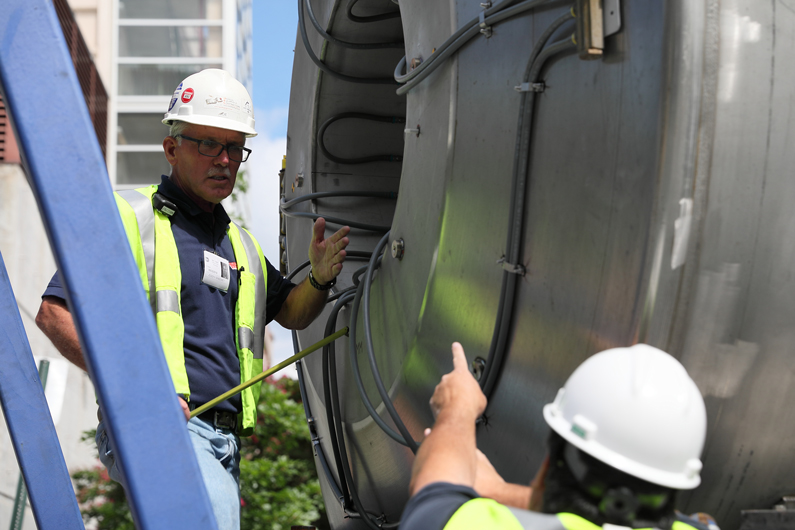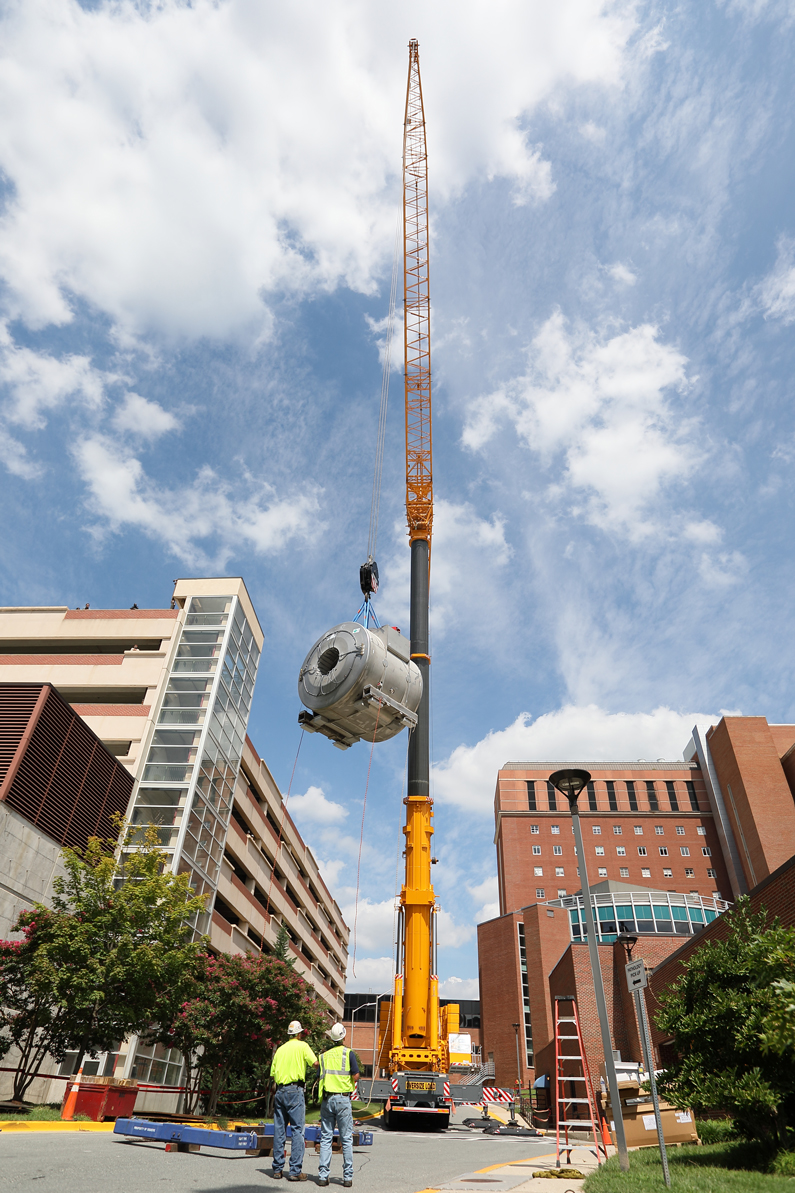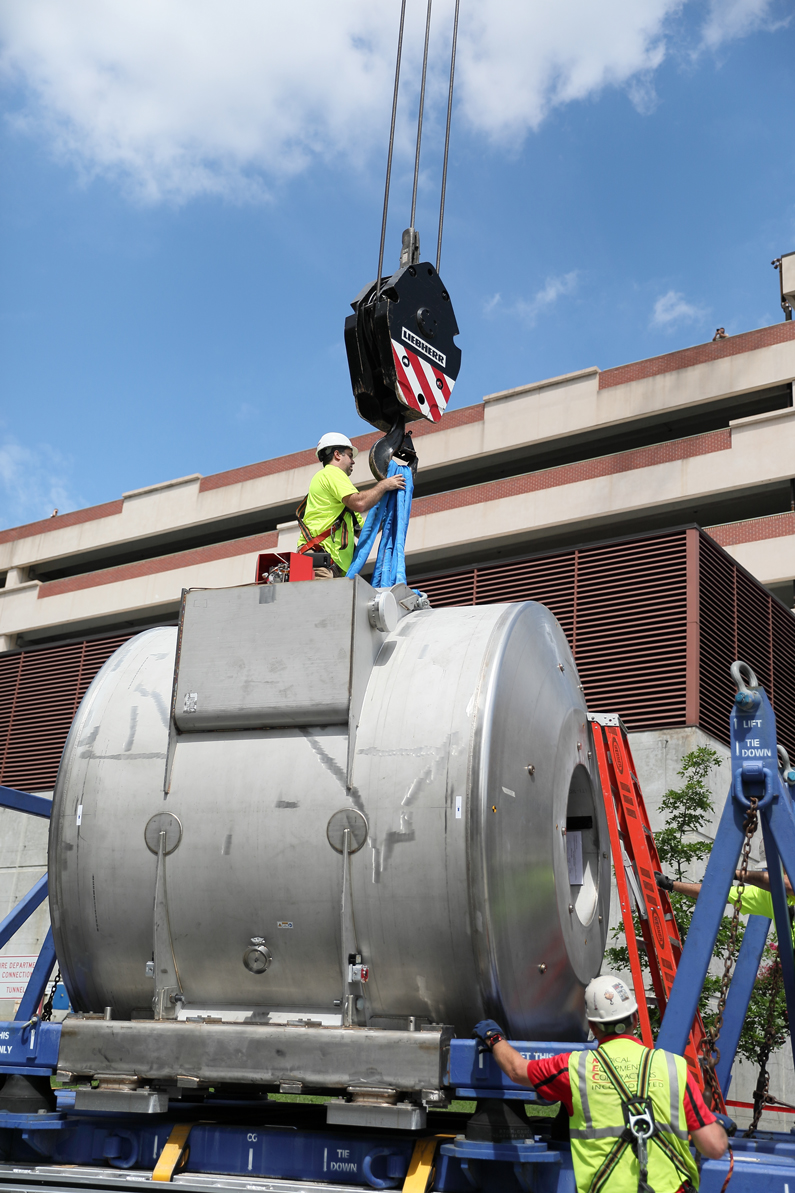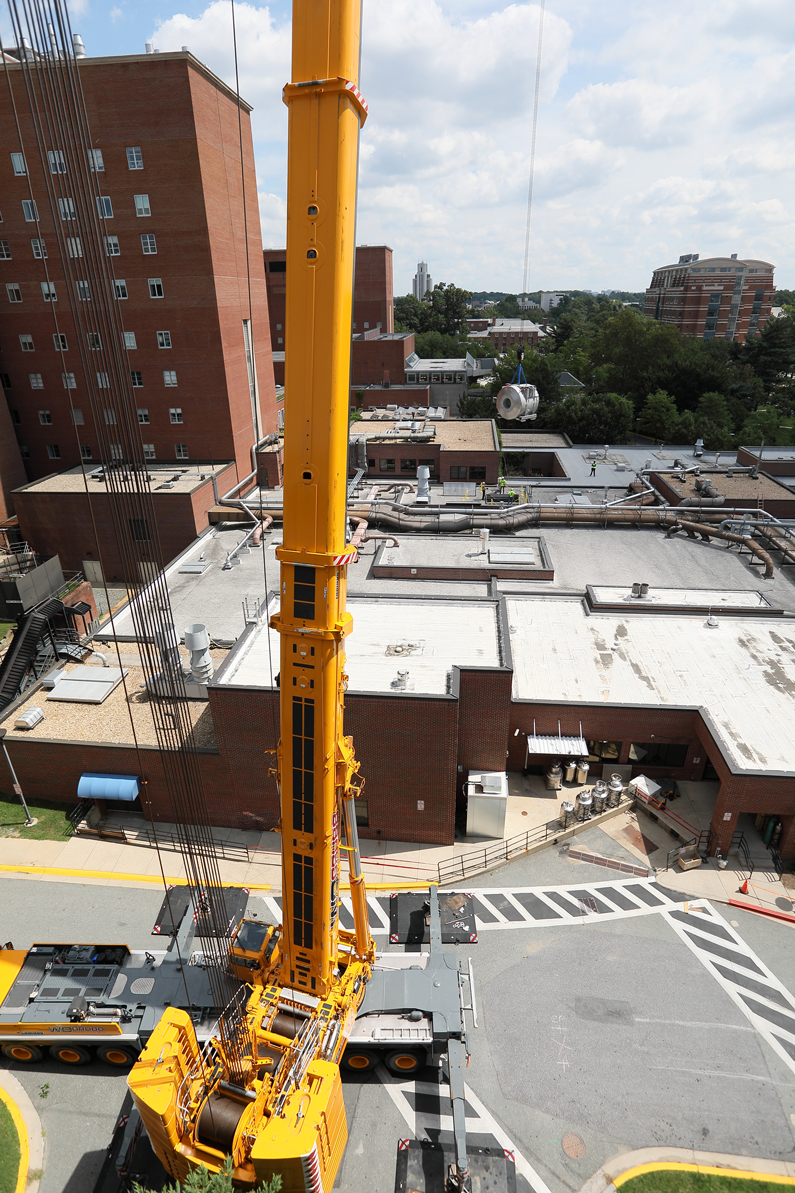Hitting the mark with a new magnet


7 Tesla MRI installed in the NIH Clinical Center
On Saturday Aug. 25, a 38,000 lb. magnet was delivered to the NIH Bethesda campus and hoisted into a newly renovated room at the NIH Clinical Center Nuclear Magnetic Resonance Center. The 7 Tesla (7T) magnet will be used in Magnetic Resonance Imaging (MRI) to produce detailed images of tissues and organs within the human body for research and diagnostics.
The 600-ton capacity crane required for the "rig-in" required an 80-ton capacity crane to assemble it on site. The larger crane boom towered approximately 140 feet over the Nuclear Magnetic Resonance Center and reached 175 feet across it from South Drive near Multi-Level Parking Garage 9 to the open hatch in the roof. It was no small feat maneuvering the magnet and rigging block, which together weighed 41,200 lbs – roughly the same weight as two NIH ambulances. They had to fit through an opening with barely an inch to spare on all sides.
Daniel Lid, with the NIH Office of Research Facilities, was the project officer for this endeavor.
"This was all made possible by extensive coordination amongst a team of professionals from dozens of NIH organizations and contractor firms, all working together to safely and successfully deliver NIH's newest magnet," said Lid. "I thank them all for their teamwork and contributions that will ultimately improve NIH facilities and equipment to better support advances in discovery and healthcare."
Requiring a five-day partial closure of Parking Lot 41 to stage, 19 trucks/trailers transported the cranes and counterweights in pieces on the NIH campus for assembly and disassembly. The oversized loads were only allowed to travel on weekdays.
The 7T MRI replaces an older 3T magnet. The system, MAGNETOM Terra, was cleared by the Food and Drug Administration (FDA) for clinical imaging in October 2017. The system provides higher resolution and can reveal "functional and anatomical details not visible at lower magnet field strengths," according to manufacturer Siemens Healthineers. Installation and testing of the 7T MRI equipment continues. The official handover of the MRI suite to NIH researchers is expected by the end of 2018.
Thank you to those below and all who were involved:
ORF Site Coordination Team
Facilities Managers from Buildings 10, 10A, and 49
Safety Officers
Fire Department
Project Officers from nearby renovations
Clinical staff and researchers (Dr. Lalith Talagala, Dr. Joelle Sarlls, and others)
Inspectors (Aaron Burroughs and Mesfin Medhin)
Officer Phil Mendez in the Police Department and Sean Cullinane in Division of Amenities and Transportation were crucial in organizing police escort and staging areas for operations.
Some of the contractors included Siemens, UTSS, Healthcare Design Builders, Medical Equipment Contractors, and W.O. Grubb.

